How Comedian Mark Phillips Plans to Turn Viral Fame Into a Black Anime Empire

I: Dream Con
To my right and across the aisle: a woman with green-tipped dreadlocks. She’s playing her Nintendo Switch. A few rows behind me, two dudes dressed head to toe in One Piece cosplay—one in braids, the other a spitting image of rubber-bodied protagonist Monkey D. Luffy, a tilted straw hat shading his fresh lineup. They tell me they run an anime-inspired clothing store called Above Adversity Apparel. And to my right, seated beside me, another Black girl with a rounded carry-on that looks like a drum.
“It’s a turtle shell,” she explains before unzipping, revealing her homemade craft—green, spiky, and dangerous to Italian plumbers. “I’m gonna be Bowser this week.” Then she pulls out a Nintendo Switch, too.
These folks, along with some 22,000 others, are on their way to Dream Con 2023, an anime convention for the anime fans who have always been here, even when they didn’t feel welcome. It might not have the name recognition of Comic-Con, but it’s growing: attendance this year nearly quadrupled last year’s version in Arlington. Dream Con is the brainchild of RDC World, a YouTube-centric entertainment collective known primarily for its comedic videos reacting to current events, anime parodies, and raucous gaming streams. Its ringleader and breakout star is multi-hyphenate writer, actor, and host Mark Phillips, whose persistently viral sketches have long made him a celebrity of the highest caliber—at least to a certain stripe of digital natives.
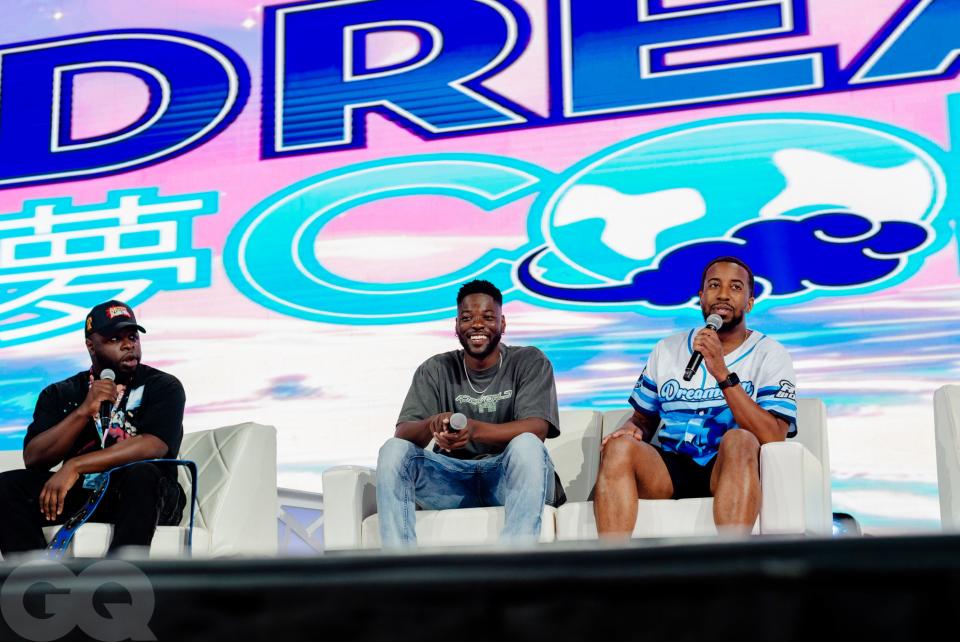
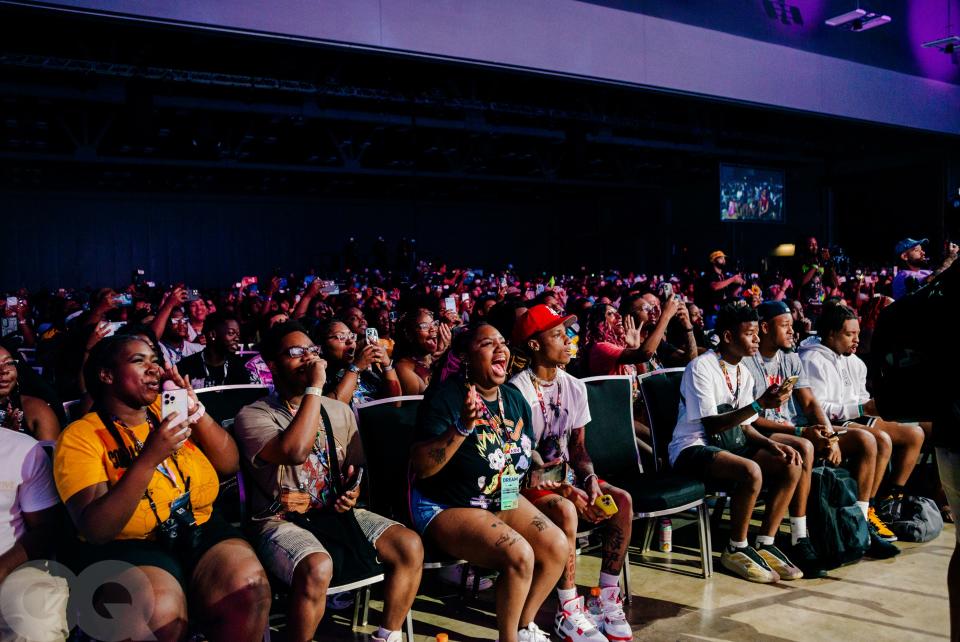
RDC World built its 17 million-strong following by satirizing the behind-the-scenes banter of NBA stars, pop culture, and, most distinctly, anime and gaming tropes—all done from the perspective of young, Black men. The product resembles a modern Chappelle’s Show, designed for social media and carrying the energy of whoever told the funniest joke in the group chat. The collection of topics is random—unless, of course, you’re in a group chat with some niggas.
It’s working. RDC World's content is lighting up the NBA. LeBron James has given Mark multiple public, passionate co-signs. Minnesota Timberwolves star Karl-Anthony Towns, a self-described “Toonami generation” kid who lives at the nexus of everything RDC is about, told me he shares Mark’s “funny as hell” RDC sketches with his friends in the league. One of Mark’s most famous characters, a J Cole stan, even made a music video cameo with Jermaine himself. Oh, and Phillips has signed development deals with both HBO and Jordan Peele’s Monkey Paw, too. Phillips says he’s penning a script with Peele. All to say: he’s making a dent in culture.
That’s what he says he's doing with Dream Con, too: “Breaking the perceived boundaries for what Black entertainment can be.”
One day at Dream Con, I meet Amber—a forensic scientist by day and fully committed conference cosplayer in her spare time. Dressed in a red polka-dotted dress and a mushroom hat to resemble Kinoko Komori from My Hero Academia, she is emphatic that Dream Con is different from seemingly similar events she's been to in the past.
“It's kind of hard for me to make friends at other cons,” she tells me, saying that many of her IRL friends in the cosplay space came through attending Dream Con. (No surprise there: a woman politely interrupts our conversation to tell Amber she looks beautiful.)
“Oh, and nobody's musty,” she told me of the crowds here. “That is the main thing.” No small accomplishment when you have thousands of people (mostly men) on their feet for 14 hours a day dressed head to toe in the robes, armor, tights, and wigs of their favorite characters.
But Dream Con is more than a literal breath of fresh air. For the Black person with passion for nerd shit, but a suspicion (if not active disdain) for nerd culture too unimaginative to conceive of Black participation, it’s for-us-by-us programming is an oasis. Consider the titles of the breakout sessions:
“The Power of Friendship: How Black Women are Building Last Connections through Anime”
“Characters Who Were Secretly Black (Cartoons, Anime and Beyond)”
“Getting Comfy: Making Nerd Spaces Our Own”
One room I stumble upon is dedicated to karaoke. One guy dressed in full Naruto gear shuffles on stage while singing Mario’s “Let Me Love You” with the entire audience clapping on the twos and fours. Another dude dressed as Tuxedo Mask from Sailor Moon sits at a grand piano and plays Silk Sonic’s “Leave the Door Open.” The marquee Day 1 event is a full-court basketball game that featured Mark and other prominent content creators. Scanning the bleachers I see dudes in durags and wave caps sitting alongside women in impeccable harijuku, both fully locked in on the game.
Leland Manigo, Mark’s cousin and and RDC skit regular, says this is by design. “Most cons are fine,” Manigo tells me. “But with the exception of BlerdCon”—an annual Washington, D.C.-area conference centering the Black experience —“Dream Con is the only one really serving our people.” He gives me a knowing look that tells me “our people” doesn’t only mean RDC fans.
The event is an extension of Mark’s personality, with all of his interests manifest at once. It’s a growing, buzzy event in its own right—but it’s also symbolic of the unique path he’s charting through the world of entertainment, and the goals he’s set for himself. As Mark put it to me, “I'm a nigga. And I watch anime. And I want to play video games, and do all this type of stuff. I'm my own person.”
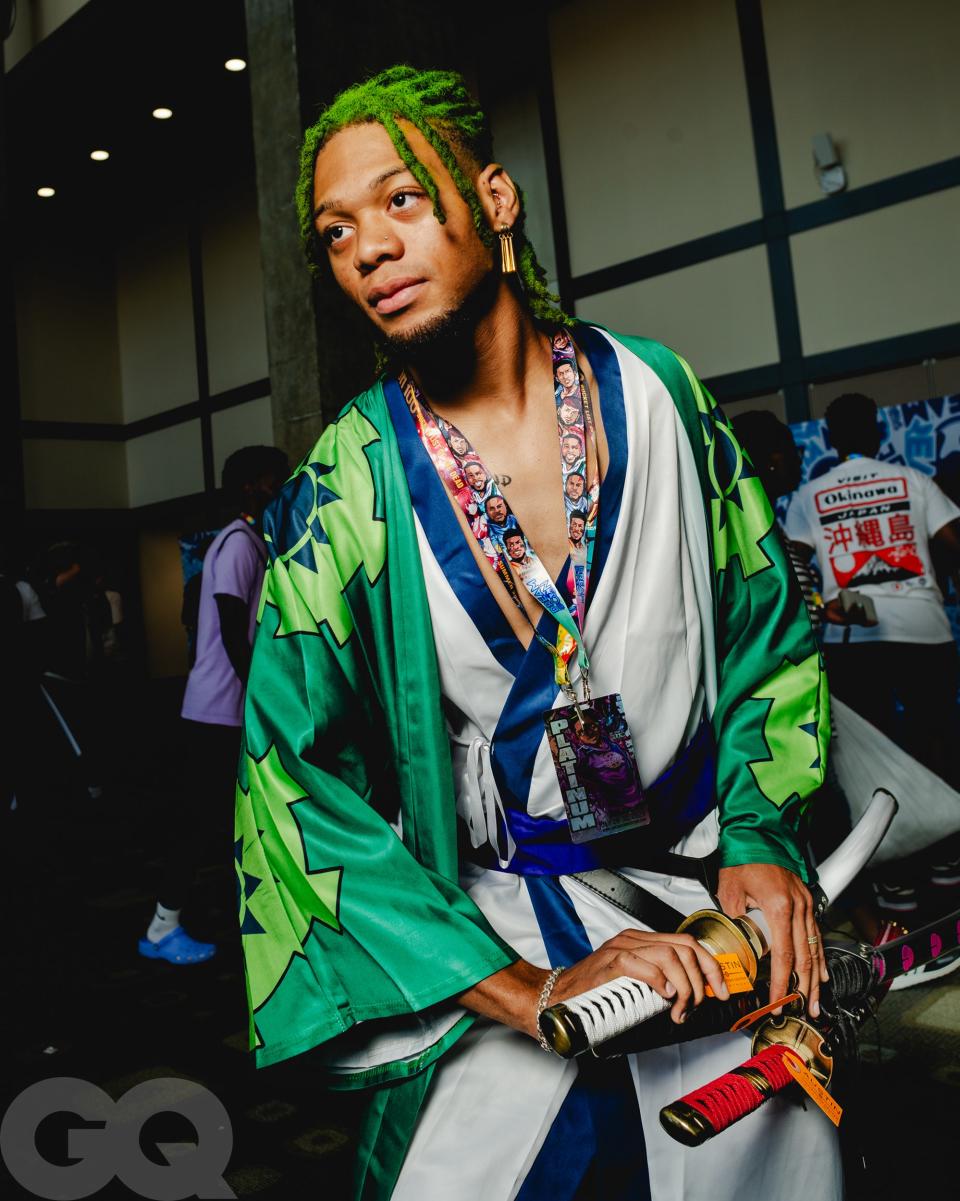
II: Anyone Can Be a Nerd
Here’s a sequence of events that captures Phillips' rapid ascension. In January 2021, James Harden is traded to the Brooklyn Nets, and RDC World springs into action. Mark plays LeBron James, furious that another superteam is emerging. He screams “I’M THIRTY-SIX!” in frustration, and slams a basketball against the wall in disgust. Not only does LeBron retweet the video—he invites RDC to the purple carpet for Space Jam: A New Legacy, shouts “I’M THIRTY-SIX,” then, in between daps (and in a complete violation of family movie decorum) tells his impressionist, “You have me fucking crying, bro.”
But RDC World—short for Real Dreams Change the World—has humble origins. “I felt like I was funny enough to make videos,” Mark tells me.

Phillips and Affiong Harris, his childhood friend and co-founder, started drafting and filming skits in 2012 from their Waco, Texas, homes. They’re both quick to admit they didn’t expect to hit it off like they did.
Harris says Mark reminded him of the bullies on his old block. Aff, meanwhile, was reserved, the kind of kid who rushed home after school to watch Toonami and play music. He didn’t expect his new neighbor to also have Gundam Wing on the DVR. But Aff couldn’t have known that anime had been a Phillips family ritual for years. Every week, Mark’s dad brought him and one of his cousins over to their house for a bucket of Popeyes fried chicken and showing the boys subtitled episodes of the 1980’s post-apocalyptic action series Fist of the North Star.
“He loved karate shows, that's his thing,” Mark recalls. “Fist of the North Star was one of them. When I seen that, I was like, What is this?” When Toonami, Cartoon Network’s popular anime-focused programming bloc, emerged, his Friday activity became daily. Phillips said he watched Dragon Ball Z “every day after school.”
Eventually, to Harris' surprise, Phillips was soon putting him on to his favorite anime at the time, Full Metal Alchemist. They regularly discussed the latest episodes of Bleach.
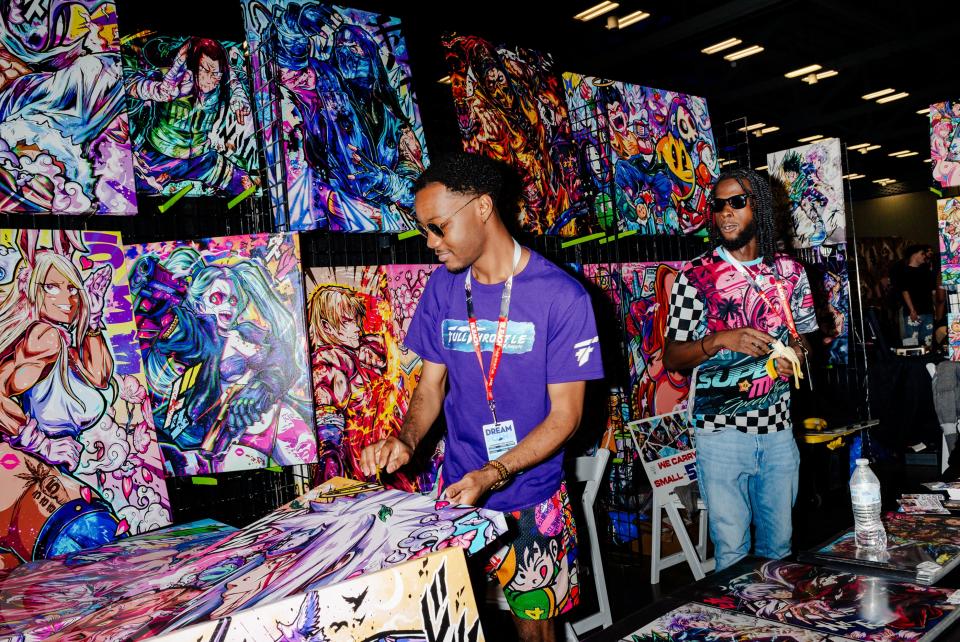
The friendship blossomed into ideas for short skits that leveraged Harris' burgeoning interest in cameras (one of their first investments was a heavy-duty Nikon D5300) and video editing. Mark was a self-described “class clown” who found skits as an outlet. “I thought I was funny,” he tells me. “But I thought I had vision more than anything.” Motivated by his favorite YouTubers—Mark cites Kevin Edwards Jr. as a particular inspiration—he figured he’d give it a shot. “So I just was like, Ooh, let me try. You know, I think I got a personality for it, too.”
His earliest videos have the bones of what would eventually distinguish RDC World sketches—young black men skewering pop culture from their unique, underrepresented position. One early clip—the earnestly titled “Home Alone 5 official video!(Very funny check it out)”—moves the Macaulay Culkin film away from its sterile white suburbs to their hood adjacent Black neighborhood. This time, Kevin (played by Harris) doesn’t have any fancy contraptions to protect his home from a robber (Phillips). Instead, he has a gun. It’s simple, unsophisticated, and clearly made by high school kids, and despite their early investment in a camera, looks like it could have been shot on a secondhand Samsung Galaxy. But the satire is sharp, with humor drawn from their ability to imagine themselves in a world you don’t expect Black people to inhabit.
As Mark explained, RDC distinguished themselves early by how frequently they included anime in their array of pop culture sendups. One of their early viral hits, the series When People Take Anime Too Far, sums up the RDC ethos. The first video finds Mark trying to use techniques from his favorite shonen animes—think Dragon Ball Z, Naruto, and all the serialized bombastic action-packed series where its heroes and villains scream the name of their techniques before they attack—in a regular street brawl. Every time he prepares to launch a move like his favorite Japanese action heroes, the character’s theme music cues up…then abruptly cuts out while he gets his ass beat. (Kamehameha waves just don’t cut it in the hood.) In Part 2, Mark’s opponent talks the exact kind of shit in the exact kind of way you would expect—and then counters with his own anime attacks, full catchphrase and everything. This time, he undoes your expectations of how the bully—initially a foil for Mark’s Blerd-y anime obsessive—is supposed to act, and the media he’s supposed to enjoy.
That’s the spirit of RDC in a nutshell. “The toughest guy can have an infatuation [with] fuckin' Attack on Titan,” Harris told me. Growing up, he explains, “it wasn't okay to like” the stuff he liked. “It was not normal. You're a nerd because you liked these things.” Ultimately, he realized what lots of nerdy teenagers realized: that he wasn’t alone. “That's okay. Anybody can be a nerd.” The group's When People Take Anime Too Far videos have nearly 50 million combined views on YouTube.
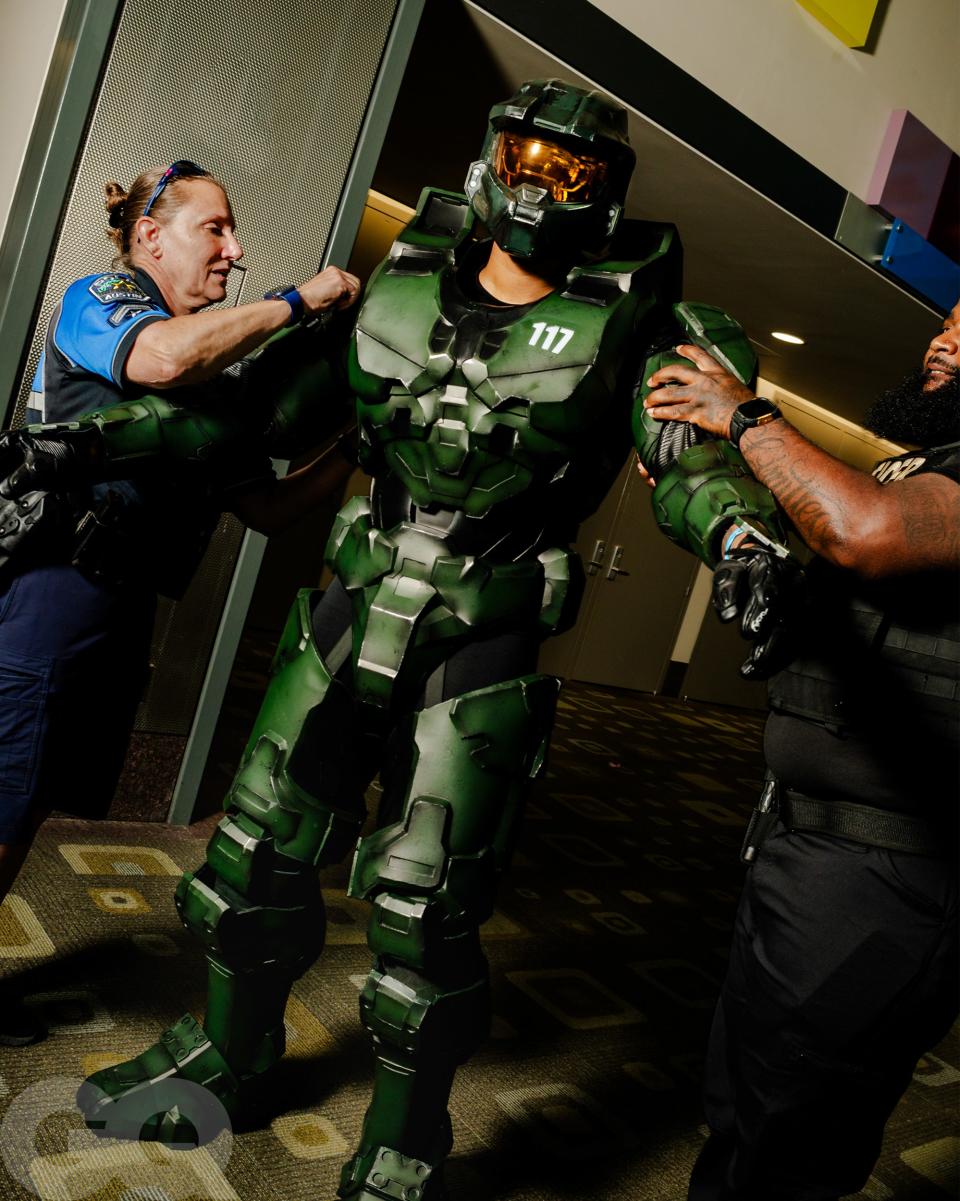
III: A Brief History of Anime and Negroes
Like Mark, I was a Toonami kid, rushing home to watch Sailor Moon, Tenchi Muyo, and Dragon Ball. Before I was old enough to scroll through fan art, I was doodling crooked Goku pictures—drawing arms is hard!—in my letter-ruled looseleaf.
Like many adolescents of my millennial age, my love of anime waned as I got older. But were I a few years younger, I suspect it wouldn’t have. Not if I grew up with creators like Phillips, modeling a way to be into turn-based RPGs and 80-episode shonen plot arcs while also keeping clean fades and girlfriends. Even as Dream Con shows how much he’s dismantled the false choice I grew up with, though, he’s felt a need to combat that stereotype.
“I feel like Black people watch anime, but don't like to admit it cause it's seen as lame, nerdy, or you can't get hoes if you watching,” he says in his frankly titled 2016 video “BLACK PEOPLE AND ANIME.”
“First off, what nigga hasn't seen Dragon Ball Z? Show me a nigga who hasn't seen Dragon Ball Z,” Phillips argues in the clip. He’s got posters for Pokemon, Akira, and My Hero Academia directly behind him and, yeah, the fade is crisp as ever. “If you said you haven't, I'm just gonna assume you lying. Because I know for a fact it's scientifically proven that 100% of niggas watch Dragon Ball Z. It's like you come out knowing what that shit is. Like you born in the hospital and somebody just put that shit on the TV.” Most RDC videos are skits, but this one is it’s as close as Mark will get to a manifesto.
But look, forget the playground bully I had forged in my head. My dad used to roast me relentlessly for sitting at the edge of my couch while these big, bug-eyed cartoons with lips that hardly synced up to the words screamed at each other. And as much I hated it back then, I get it! Like, really, I get it.
Imagine explaining Dragon Ball’s Mr. Popo—a fat, blackfaced, and red-lipped attendant to the deity protecting Earth—to a Black man born in the 50’s. You don’t need to be Dr. Umar to question why the strongest beings in the world reach their highest status by transforming into blond-haired, blue-eyed demigods. I hadn’t yet heard The RZA, Wu-Tang Clan’s creative engine, describe DBZ as “the story of the Black man in America.” Without a finely tuned sense of interpreting allegory, there was no way I could defend Japan embracing Jim Crow-era caricatures to somebody who took Betty Shabazz lectures at, and I’m not making this up, Medgar Evers College?

While strolling through the exhibitor hall, I get perhaps the perfect answer from the perfect person. Manning the RDC merch table is the man who introduced his son to the passions he’s turned into not only a living but a lifestyle—Phillips’ dad, Mark Senior.
Back in the 80’s, Sr. was stationed in Japan, giving him a unique exposure to anime that predated Crunchyroll, DVD box sets or legally dubious streaming sites, He liked what he saw. “What really got me was the Japanese language,” he tells me. Even though, at first, he didn’t understand what the characters were screaming at each other, “you could see the power of their words. You didn't know what they were saying at first.”
So when he started his family—Mark is the youngest of six—he shared the culture he would have never seen were he not deployed.

I asked Mark Sr. if he believes he gave Mark a different upbringing—especially for Black kids. “The biggest thing is that Black people had their own stuff going and they didn't understand the other cultures until you were exposed to it,” he says. “And that's what I did. I exposed him to different things…And when you don't know, you tend to ridicule it.”
While humbly acknowledging his embrace of anime was unique for parents of his generation, he’s grateful for the change he’s witnessed and sees Dream Con’s growth as proof. “A lot of these people that you see around here,” he tells me, gesturing to the artists, designers, comic book creators and fans surrounding us, “were exposed to it at one time or another. When [Mark] came along [he] really opened up the doors for what he was doing and changed everybody's outlook on it.”
He continues: “First time the electric car came out, people were like, ‘Aw, ain't nobody gon' want an electric car.’ Now look what you have.”
Phillips tells me he was grateful for that parental reinforcement. Even though he said his dad wanted him to be an engineer, “He never, like, forced me you know what I'm saying? I would tell him no, I'm gonna do something else. I'm gonna find someone else to do in life. But he never got mad at me for it. He just [was] like, alright, you know, if that's what you want to do. And I feel like that really gave me the freedom and the space to try to do it.”

IV: Dark Lights Overhead
It’s been three months since Dream Con, and Mark is still tired. Our first and only chat at the conference was cut short, with Mark’s attention required for fans picking up their registration, photoshoots with other YouTube creators, and his RDC-mates peppering him with questions about logistics. That, and a pre-conference party. “Lil Baby might come through,” Mark told me, so he needed to clean up before the function.
Valid. So when we reschedule, it’s via a Zoom call, but he keeps the camera off and apologizes for the months of phone tag. “I been grinding, man,” he says. He’s a few minutes late, just up from a nap after the latest of his many flights between Austin and Los Angeles.
“We all are out here,” he explains of him and his close-knit crew, explaining that RDC keeps places to ensure everyone has a place to rest their head in both cities.
The content-creation business is going well—well enough, certainly, to partially subsidize film and TV concepts that one day might be too big for YouTube. “We get a lot more done quicker around here” in LA, he says. “Like, you know, for Hollywood purposes, anyway.”
Indeed, when RDC World started blowing up, Hollywood came calling. Most of the conversations, Mark said, went nowhere. And when he got an email from an exec at Hoorae—Issa Rae’s production company—he expected it to “blow over” like the rest. “I'd honestly had a lot of those conversations at that point so I don't know if I believed it,” he told me. “Because a lot of people say a lot of stuff. Especially in LA.”
But the exec, Montrel McKay, offered not only genuine interest in what Mark was doing, but an understanding of his potential. McKay is now one of the first people Mark calls when “I'm feeling, like, maybe this is just not for me because you know, Hollywood takes, like literally forever for everything that they do,” he says.
Phillips has been working particularly hard on Dark Lights, an anime series set in a world where people from the hood have superpowers—but only reveal their full selves at night. Phillips says that while a Dark Lights anime was in development with Warner Media in 2021, he is now shopping to other studios. It doesn't yet have a release date.
Compare that to Dark Lights’ manga, which Phillips released in September through RDC Universe, the company’s direct-to-consumer platform. Demand was so high for Dark Lights it shut down the site for four days. RDC says that since launching the service in June, they’re up to 15,000 signups, with some 1,400 monthly subscribers paying $5 a month.
That success was enough, Mark says, to blunt his interest in working with Hollywood—at least in the standard Hollywood way. “You can make a lot of money on YouTube,” he says. “And honestly, I ain't gon' lie, my mind started to shift towards just being like, I'll make the movies and put them on the site myself and just get the world's attention that way.”
But despite the cash pouring in, RDC can’t go it entirely alone. Phillips says it can take two years to make one season of an anime—and doing so without a big backer feels impossible. So he’s gotta make the calls and take the meetings.
So far, the meetings have all ended with a no, an unfamiliar experience from a man who made it this far from the do-it-yourself nature of YouTube stardom. And when he’s pitching Dark Lights, he told me, he wrestles with the possibility that he’s facing more than the usual hurdles of releasing an anime.
“In my opinion, there is no real—[or] not many—animes centered around Black people. And that's what I plan to make with Dark Lights,” he says.
Indeed, the list of Black-led animes is short. Phillips acknowledges Afro Samurai, the Samuel L. Jackson-voiced and RZA-scored series. Aaron McGruder’s anime-inspired The Boondocks is another. Both, though, are far from what Phillips says he has in mind—he’s not delivering a straight comedy like The Boondocks, and he’s annoyed that the powers that be are “always putting Black people in samurai spots.”
And so he suspects that part of the reason he can’t get Dark Lights off the ground is because the execs he’s pitching aren’t able—or willing—to understand it.
“Since Dark Lights is based around the hood,” Phillips imagines, it’s perhaps easier for execs to write it off. “They might be like, Welp, here we go again—another hood story.”
But even with its superpowered elements, he believes the show is more grounded and relatable than people realize.
“We basically say this is the same thing as Naruto," he says, comparing it to the hit anime. But instead of being set in fantastical Japanese villages, “I'm just basing this around an American family that has grown up in the hood.”

For someone who has spent years getting millions of views on all his videos—inventing fantastical worlds and bringing them to life in hours or days, relying not on CGI or expensive animation but on the imaginations of his viewers—the slow pace of the entertainment industry can be dispiriting. “Hollywood usually only does what works—what they know works,” he said. “They don't want to try unique things.”
Ultimately, he explained, getting there might require doing what he’s always done: forging his own path. “In the future, I mean, I hope to have one of the best production companies ever,” he says. "I like to say, as a comparison, like Pixar. Not saying it's only gonna be animated stuff—I'm saying Pixar is quality.”
Pixar—but different. Dark Lights is maybe the first glimpse at what he means. The visceral visual, action-oriented movement between panels is drawn from graphic novels that comics fans from either side of the Pacific can appreciate. The snappy, roast-heavy banter between its characters, all of whom know who has superpowers and who doesn’t, carries the same DNA as the viral RDC sketches he’s been writing with his friends for a decade, but with world-building that isn’t confined to setting up the next joke. It’s kids—heroes and villains alike, from the kind of neighborhoods that are hypervisible as tropes but invisible to outsiders. Even though its heroes and villains’ powers emerge most vividly at night, everyone in the community knows their potential. The rest of the world? Still sleep.
Phillips isn’t surprised that Hollywood doesn’t understand him yet—but he knows it’s only a matter of time before it does. “I feel like I'm more of a unique writer,” he says. “I bring something that, in my opinion, hasn't been done before.” Except he has been doing it. You just have to know where to look.
Originally Appeared on GQ


